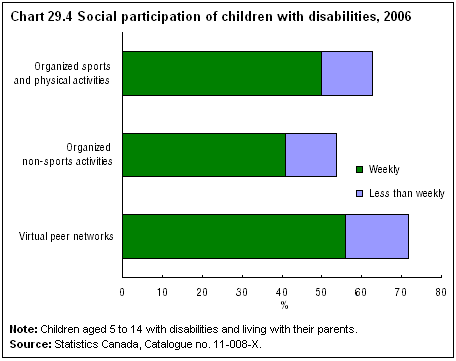Social participation of children with disabilities
Archived Content
Information identified as archived is provided for reference, research or recordkeeping purposes. It is not subject to the Government of Canada Web Standards and has not been altered or updated since it was archived. Please "contact us" to request a format other than those available.
Related information
About two-thirds (63%) of children aged 5 to 14 who have disabilities and are living with their parents took part in organized sports and physical activities in 2006. Just over half (54%) were into non-sport activities like taking lessons, joining clubs and community groups; while nearly three-quarters (72%) were networking virtually with peers online and by phone.
The type of disability was significantly associated only with non-sport activities, as children with a non-physical disability, such as a learning disability, had lower odds of participating. Similarly, the severity of limitation was related only to virtual networking—children with a severe disability were less likely to network online.
Parental support at school increased a child's odds of participating in both organized sports and non-sport activities, but it did not increase their odds of using virtual social networks.
- Date modified:

